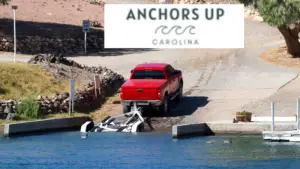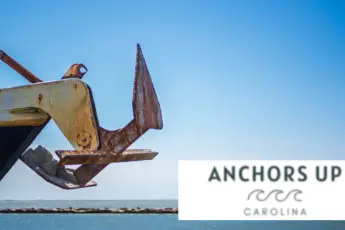Boat owners across the country load and unload boats from a trailers on a daily basis. Storing a boat on a trailer is far less expensive when compared to a dry rack or marina. This is especially true when keeping a boat at home. Marine ramps undergo wear and tear from loading and offloading. When of the primary culprits is using the engine to drive on a trailer. So, what is the problem with using your boat’s engine to drive onto a trailer? The next time you head out on the water, you need to understand the problem.
Understanding The Dangers Of Boat Ramps
As an avid boater and former captain, I have utilized boat ramps consistently. All too often, I have seen experienced and inexperienced operators either make a mistake or run into trouble from something unexpected. Here is the most common areas of danger at a boat ramp.
Wet and Algie Lined Surfaces
Without question, the inclines of boat ramps, both in the water and out of the water, are lined with algae. With that being said, the algae is incredibly slippery. I have slipped and fallen on ramps, which was not an enjoyable experience. Be aware when you walk on ramps.
Secondly, similar to slips and falls, vehicles slide when reversing down the ramp or pulling the boat up. I have slid over ten feet down a ramp and fortunately, the trailer remained straight and the vehicle stopped before becoming submerged. For this reason, back down the ramp slowly with your foot on the break.
Apply The Emergency Brake
Undoubtedly, trucks and trails end up on the water, which results in a total loss of the vehicle. It should be noted that it is most often not the result of failing to put the truck in park but, instead, the gear slipping. Always apply the parking brake when exiting the vehicle to prevent submerging the truck and potentially causing injury.
Never Use Your Boat’s Engine To Drive It Onto The Trailer
We all want to make the loading process at a boat ramp as quickly as possible because it is a highly congested area. Driving the boat onto the trailer is not a solution and, infact, is dangerous. Here is the answer to what is the problem with using your boat’s engine to drive onto a trailer?
Causing Damage To The Boats Engine
Without a doubt, boaters capable of driving a boat squarely onto a trailer save time but at a risk. Two common issues occur when throttling up and driving the watercraft onto the trailer.
First, take into account the angle of the boat ramp. As the boat moves closer to the ramp, the ramp slopes upwards. Unsuspecting boaters strike the concrete base of the ramp with the boat’s skeg and propeller. Unquestionably server motor damage occurs, especially when applying significant power. Avoid powerloading a watercraft for this reason.
Secondly, watercraft become misaligned when driving them up and onto the trailer. Unfortunately, boats have gone sideways up trailers. The bow and stern are literally perpendicular to the trailer. Avoid this situation altogether by cranking the vessel up and onto the trailer or gently driving the boat onto the bunks at low RPM.
Power Loading Causes Erosion
Believe it or not, what you can’t see below the water when power loading a boat is more detrimental than engine damage.
Powerloading, is the term used to define the impacts on the ramp and the sediment on the bottom of the body of water.
Two issues are caused below the surface of the water when powering up the engine to drive the boat onto the trailer.
Eroding The Base Beneath The Paved Ramp
Without question, force emitted from the propeller when running up the engine or engines to a high RPM causes significant disturbance to the sediments on the seafloor.
As a result of the force, the base beneath the concrete becomes washed. For this reason, the slab of concrete is left without a foundation beneath, and deep pool forms behind the end of the slab. The consequences are devastating. Boaters backing trailers down a ramp often reach the drop off, resulting in the trailer dropping sharply off the edge.
A trailer backed beyond the ramp’s threshold may become damaged by one striking the frame on the concrete. Secondly, the force of the vehicle pulling the trailer back over the edge may cause damage to the axle. Either situation can be prevented by avoiding power loading a boat.
Mound Creation By Redeposited Sediments
When you consider the amount of sediments moved to create a deep pool at the edge of the ramp, that equates to a significant amount of gravel, sand, or other base. The base doesn’t simply disappear. Instead, it is displaced.
The displaced sediments form a mound behind the deep pool from power loading. As a result, the accumulation of base creates a shallow shoal causing boats to reverse out of the boat ramp and run aground. Running aground results in damage to the area that strikes the ground, including the motor and the hull. The biggest threat to the engine is lower unit damage.
As a result, a dredge operation is required to take action. The sediment must be moved back to its original position. Therefore, the issue is two-fold. Not only does power loading cause damage to boats, but it also requires a costly and avoidable expense.
Avoid Power Loading Your Vessel At A Boat Ramp
Becoming educated on the impacts of power loading is the best preventative measure. Without question, some people just don’t know the effects. So, what is the problem with using your boat’s engine to drive onto a trailer? It is no problem when it is done at low RPMS; however, never power them up high.







